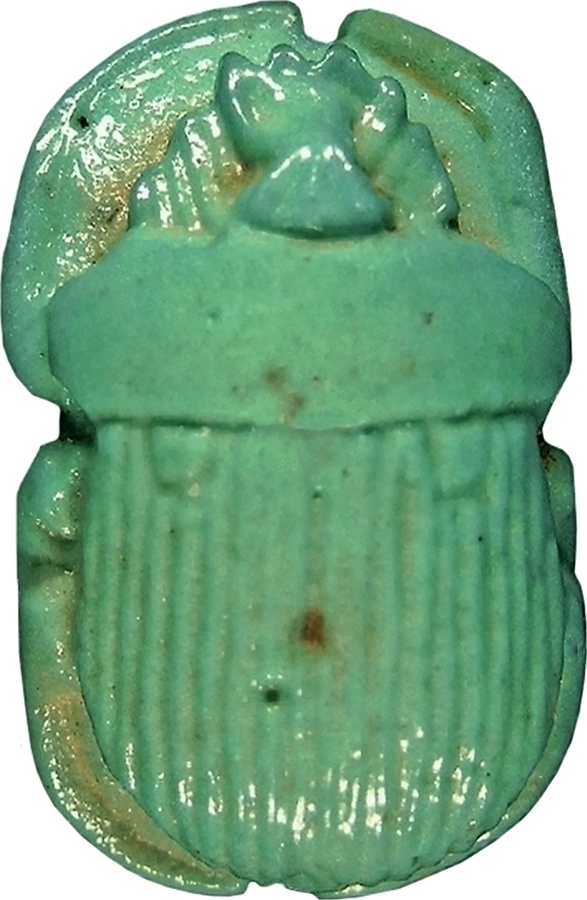Naturalistic Scarab
(Ancient Egypt and Nubia )
The ancient Egyptians believed that the dung beetle, the Scarabaeus sacer, was one of the manifestations of the sun god. Representations of these beetles were used as amulets, and for ritual or administrative purposes.
Naturalistic scarabs, such as this, were used as part of the amulet set of the mummy. They have a naturalistically formed belly and no additional inscriptions or motifs. The highest point of the back of this scarab is the pronotum (dorsal plate of the prothorax). Pronotum and elytron (wing cases) are separated by a straight, incised partition line; the wing cases have a vertical hatch line pattern (nine lines on each side), a central division line (which ends V-shaped in a scutellum), and U-shaped shoulder marks. The proportions of the top are almost balanced, but the pronotum is short in comparison to the elytron. The triangular head is flanked by very small, quarter-spherical eyes, which protrude from the head; the side platesare irregularly trapezoidal and have hatch lines, and clypeus (front plate) is four times serrated. The detailed modeled extremities are slender and have natural form; central notches are at both side edges as well as the top and bottom edges. The body structures of the bottom is modeled, and a quarter-oval eye protrudes from the center of the belly. The basic form of the scarab is long rectangular-oval.
The scarab is a funerary amulet with regenerative function, and was attached to the mummy bandages.
Provenance
Provenance (from the French provenir, 'to come from/forth') is the chronology of the ownership, custody, or location of a historical object.
Henry Walters, Baltimore [date and mode of acquistion unknown]; Walters Art Museum, 1931, by bequest.
Geographies
Egypt (Place of Origin)
Measurements
H: 3/8 x W: 9/16 x L: 7/8 in. (1 x 1.5 x 2.3 cm)
Credit Line
Acquired by Henry Walters
Location in Museum
Not on view
Accession Number
In libraries, galleries, museums, and archives, an accession number is a unique identifier assigned to each object in the collection.
In libraries, galleries, museums, and archives, an accession number is a unique identifier assigned to each object in the collection.
42.371






